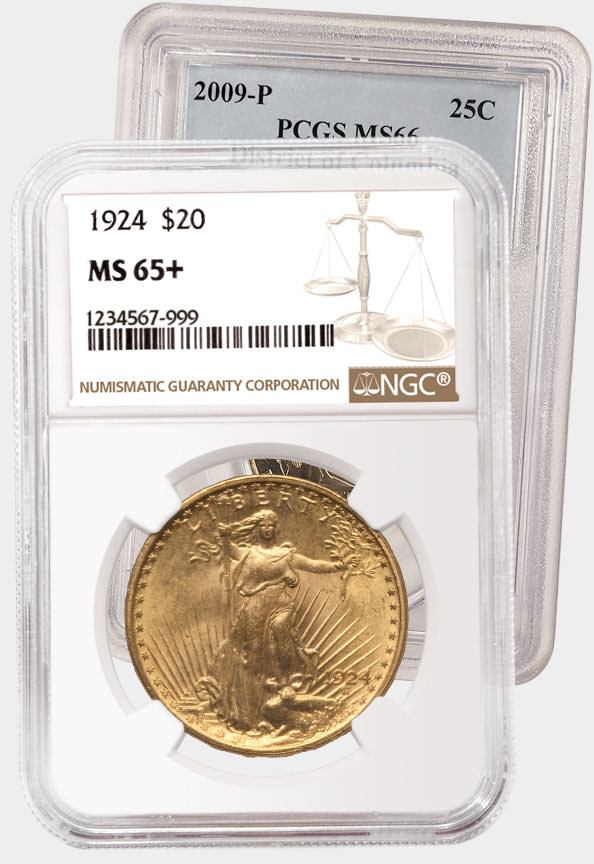NGC Ancients: Carthaginians Borrowed Sicilian Coin Designs
Posted on 10/16/2012
The western Mediterranean was populated by many different peoples in ancient times: Phoenicians, Greeks, Etruscans, and Romans just to name a few. Over the course of time these peoples’ interests clashed, resulting in wars, usually over land rights and commercial conflicts.
The Romans and the Carthaginians were two of the most powerful forces in the region, and in the 3rd and 2nd Centuries B.C., they engaged in three successive conflicts known as the Punic Wars. But long before those, the Carthaginians were at odds with the Greeks, who had colonized some of the same regions desired by the Carthaginians, principally the island of Sicily.
The Carthaginians originated in Phoenicia and were of Punic heritage. Centuries before either the Greeks or the Romans migrated west, the Punic people founded a network of coastal cities that in early times were little more than trade hubs. These Phoenicians were extraordinary sailors, and had a keen interest in commerce. These skills combined to allow the settlers in Carthage to build an enviable, commercial empire.
Three centuries of warfare between the Greeks and the Carthaginians who competed for supremacy in Sicily had many profound effects, not the least of which was a most attractive and varied series of coins.
 Collectors are especially fond of these Carthaginian war coins, which are generically termed “Siculo-Punic.” They feature a combination of Sicilian Greek and Punic elements, and bear Punic inscriptions which are still a bit mysterious. The best of these coins were struck from dies cut by the best (presumably) Greek artists that the Carthaginians could afford to hire.
Collectors are especially fond of these Carthaginian war coins, which are generically termed “Siculo-Punic.” They feature a combination of Sicilian Greek and Punic elements, and bear Punic inscriptions which are still a bit mysterious. The best of these coins were struck from dies cut by the best (presumably) Greek artists that the Carthaginians could afford to hire.
The most influential prototypes for early Siculo-Punic coins were silver tetradrachms of Syracuse. These issues were struck by Carthaginians in the late 5th and throughout the 4th centuries B.C. at Panormus, Thermai, and a third, unidentified Sicilian mint.
The designs of these Carthaginian copies are faithful, but their style is sometimes stiff and approximating, which suggests the engraver was Punic rather than Greek. A few dies from the series at Panormus, however, were of a fluid, “Greek,” style.
Except for the final series, the Arethusa head adopted from the coinage of Syracuse was favored by the Carthaginians. Indeed, they combined this type with designs depicting two important Carthaginian symbols: that of the horse and the palm tree.
 The reverses of the early issues either show a horse standing or in action, with a palm tree in the background. The style on most of these coins is fantastic. The horse is usually shown in profile to the right or the left, but sometimes the head is shown slightly facing the viewer. The horse is calmly standing or is depicted prancing, trotting, leaping, or performing a trick. There can be no doubt that the artists had a deep understanding of horses, for the nuances of form and movement are clearly rendered. Understandably, these are among the most expensive coins in the Siculo-Punic series.
The reverses of the early issues either show a horse standing or in action, with a palm tree in the background. The style on most of these coins is fantastic. The horse is usually shown in profile to the right or the left, but sometimes the head is shown slightly facing the viewer. The horse is calmly standing or is depicted prancing, trotting, leaping, or performing a trick. There can be no doubt that the artists had a deep understanding of horses, for the nuances of form and movement are clearly rendered. Understandably, these are among the most expensive coins in the Siculo-Punic series.
Later, the horse-and-palm reverse was transformed to show only the head and neck of the horse with a comparatively small palm tree in the field behind. Here the die cutters’ love of the horse is still evident, for the composition is precise and the details often are amazing.
 On these coins – the last of the Siculo-Punic tetradrachms – the new obverse type is the head of young Heracles wearing the scalp of the Nemean lion, which must have been borrowed from the silver tetradrachms of the Macedonian King Alexander III “the Great” (r. 336-323 B.C.).
On these coins – the last of the Siculo-Punic tetradrachms – the new obverse type is the head of young Heracles wearing the scalp of the Nemean lion, which must have been borrowed from the silver tetradrachms of the Macedonian King Alexander III “the Great” (r. 336-323 B.C.).
 It is somewhat odd that the Heracles obverse was adopted, since the coins of the Macedonian Kingdom became the main currency in Greece, Egypt, the Holy Land, and Asia Minor. They did not flow west of Greece in great quantities. Indeed, the Corinthian stater was the main Greek coin that was exported westward.
It is somewhat odd that the Heracles obverse was adopted, since the coins of the Macedonian Kingdom became the main currency in Greece, Egypt, the Holy Land, and Asia Minor. They did not flow west of Greece in great quantities. Indeed, the Corinthian stater was the main Greek coin that was exported westward.
Clearly, the broad trade networks of Carthaginian merchants must have been responsible. They readily traded with Greeks, Egyptians, and peoples of their Phoenician homeland; and in all of these places, Alexander’s coinage had been the “standard” for more than a generation before this final Siculo-Punic series began in about 300 B.C. Furthermore, when the Punic people saw the head of Heracles, they no doubt saw it as a mirror image of their own mythological hero, Melqart.
Stay Informed
Want news like this delivered to your inbox once a month? Subscribe to the free NGC eNewsletter today!
